Comprehensive Guide to Futures Margin and Its Impact
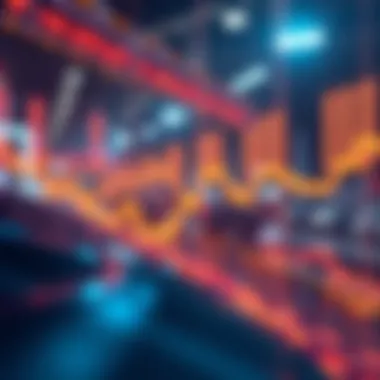

Intro
Futures trading stands at the forefront of market activity, evolving every day with advancements in technology and changes in global economics. At the heart of this trading mechanism lies the futures margin, an essential topic that deserves a closer examination. Understanding futures margin isn’t just about numbers and calculations; it's about grasping the core principles that govern risk and reward in the trading space.
Key Points to Discuss
- The types of margins involved in futures trading.
- How margin calculations affect trading strategies.
- Regulatory considerations surrounding futures margins.
- The psychological impact on traders when dealing with margins.
This article aims to break down these components, providing insights that speak to both newbies and seasoned traders. Understanding the implications of futures margins can help traders navigate the complexities of the market, making informed decisions that align with their goals.
Relevance
In an environment where prices fluctuate rapidly and market trends shift overnight, having a solid grasp of how margins operate is invaluable. It’s not just about investing in futures; it’s about developing a strategic mindset that considers every angle, from risk management to market psychology.
With an engaging narrative, we’ll explore the mechanisms of futures margin, dissect its significance, and address the broader implications of its use in the futures market.
Prelims to Futures Margin
Futures margin stands as a fundamental component in the realm of trading, serving as a sort of insurance policy that keeps markets functioning smoothly. It isn't just about locking in a position; it’s about managing risks and leveraging opportunities. Understanding futures margin is crucial for anyone looking to navigate this financial landscape, whether they are seasoned traders or newcomers eager to get their feet wet.
Defining Futures Margin
Futures margin can be described as a good-faith deposit that traders must maintain in their margin accounts to engage in futures trading. This deposit acts as a buffer against potential losses on trades made, ensuring that adequate funds are available to cover any unforeseen price movements. It's essential to differentiate between two types of margins: initial margin, which is required to open a position, and maintenance margin, which must be upheld to keep that position open.
In simple terms, if you want to jump into a trading pool, you need to put down a certain amount of your own money first—the initial margin. Once you're in, you must maintain a minimum balance in your account—this second threshold is the maintenance margin.
The significance of this structure cannot be overstated. It helps maintain market integrity and ensures all parties can meet their obligations.
Historical Context
To truly appreciate how futures margins operate today, it's worth looking back at their historical origins. The concept of margin trading began to take shape in the late 19th century with the emergence of organized futures exchanges. Back then, the financial markets faced significant volatility and a lack of regulatory oversight. As a response to these challenges, margin requirements became a protective measure, ensuring that traders—both small and large—hedged their bets against market fluctuations.
The practice has evolved over the years, influenced by major events such as the 1929 stock market crash and various economic crises that followed. These events highlighted the necessity of robust margin requirements and regulations to stabilize markets during turbulent times. Regulatory bodies, such as the Commodity Futures Trading Commission (CFTC) in the United States, emerged to oversee and enforce these standards.
Understanding this historical context is crucial for comprehending the underlying principles that govern futures margin. It reflects an evolution geared towards enhancing market safety and integrity, as well as a continuous adaptation to the changing dynamics of global finance. With every twist and turn in the markets, the future of margin trading will undoubtedly continue to change as well, but its foundational principles will remain rooted in these historical lessons.
Mechanics of Futures Margin
The mechanics of futures margin form the backbone of trading practices within futures markets. Understanding these mechanics is crucial for traders at all levels, as they navigate the often volatile world of commodities, currencies, and financial instruments. One of the key elements to grasp is how these margin mechanisms can impact both trading performance and overall risk management strategies. By dissecting components like the initial margin, maintenance margin, and margin calls, traders can better equip themselves to make informed decisions and mitigate potential losses.
Let's explore these mechanics further by breaking them into digestible concepts.
Initial Margin vs. Maintenance Margin
When entering a futures position, traders face the concept of initial margin. This is essentially the upfront capital required to open a position. It acts as a security deposit, safeguarding against default should the market swing unfavorably. Think of the initial margin as a financial handshake; it establishes trust between both parties involved in the trade.
However, there is another player in this game—the maintenance margin. After a position is established, this amount is the minimum balance that must be maintained to keep it active. If the account balance dips below this level due to market fluctuations, traders face a margin call. The maintenance margin serves as a buffer, ensuring there is still enough backing to support the futures contracts. It's a vital concept because it directly affects liquidity.
For example:
- Initial Margin: Suppose entering a crude oil futures contract requires an initial margin of $5,000. This deposit ensures that the trader can absorb potential losses in the opening phase.
- Maintenance Margin: Following our example, if the maintenance margin is set at $4,000, and the trader’s account falls below this, they’ll need to inject more capital to avoid liquidation of their position.
Margin Calls Explained
Margin calls are the unwelcome reality for many traders. A margin call occurs when the equity in a trader's account dips below the maintenance margin. To put it plainly, it’s a call for additional funds to keep the position afloat.
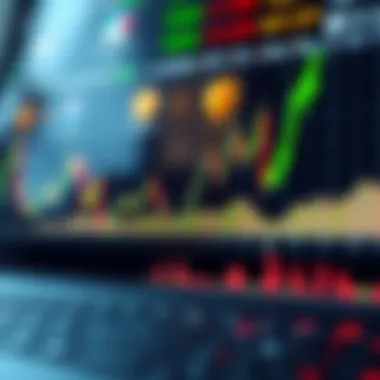
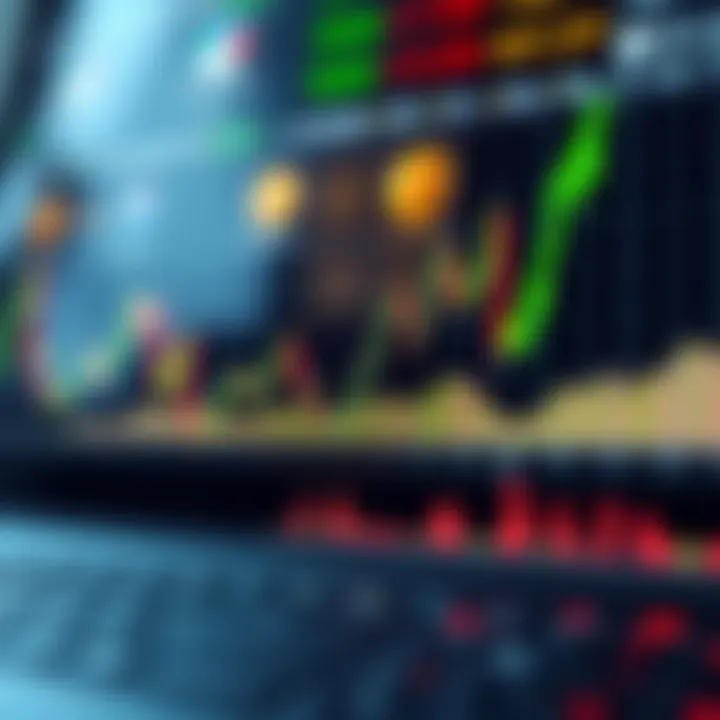
Imagine this scenario: A trader holds a futures contract for silver, and prices tumble unexpectedly. Their account value may decrease, triggering a margin call. This means they must either deposit more funds or face the automatic liquidation of their position. In a fast-moving market, failing to respond promptly can lead to significant financial damage.
"Prompt action is key; understanding the intricate relationship between price action and margin levels is essential for any futures trader."
Notably, margin calls can vary significantly across different markets and brokers, making it imperative to become familiar with specific requirements ahead of time. The frequency and method of margin calls can depend on the broker's policies, but they are typically immediate or within a defined timeframe.
Settlement and Margin Requirements
The last piece of the mechanics puzzle involves settlement and margin requirements. Futures contracts can be settled either through cash settlement or physical delivery. Each method has its own implications for margin requirements.
In cash settlements, the differences between contract prices and market prices are settled in cash without physical exchange of the underlying asset, which straightforwardly impacts margin levels. On the other hand, physical delivery demands that the trader maintain sufficient margin throughout the period until the contract expires to facilitate a smooth transfer of the underlying asset. This aspect amplifies the need for disciplined margin management and can alter strategies based on contracts held.
The End
The mechanics of futures margin encompass intricate details that require a deep understanding for effective trading. Distinguishing between initial and maintenance margins helps traders identify the immediate capital demand versus sustained requirements. Moreover, awareness of margin calls helps mitigate risks, and understanding settlement requirements informs strategy and position management. In this volatile trading realm, a keen grasp of these mechanics is not just advisable; it’s essential for long-term success.
Calculating Futures Margin
Calculating futures margin is essential for anyone looking to trade in the futures market. It lays the groundwork for understanding how much capital is required to maintain a position and serves as a barometer of risk in trading decisions. The calculations influence not only individual trading strategies but also the broader market dynamics, as they can dictate traders' behaviors and reactions to market movements. As such, a comprehensive grasp of margin calculations can empower traders to manage their risk and optimize their strategies effectively.
Understanding Margin Percentages
When discussing futures margin, one must grasp the concept of margin percentages. Simply put, this percentage represents the minimum amount of equity a trader must maintain in their margin account relative to the value of the position held. Think of it like putting a down payment on a house; it’s the initial investment that allows you to leverage a much larger asset.
To illustrate, consider a trader who wishes to purchase a futures contract worth $10,000. If the margin percentage is set at 10%, the trader is required to deposit $1,000 in their margin account. This percentage varies across different markets and can change based on volatility. The higher the margin percentage, the more capital a trader must set aside, hence reducing their potential buying power. Understanding these nuances is crucial for informed decision-making and risk management.
Key Points about Margin Percentages:
- Variable Rates: Margin percentages can fluctuate based on market conditions.
- Impact on Buying Power: A higher margin percentage decreases the available capital for additional trades.
- Risk Management: Knowing your required margin helps you avoid margin calls when the market doesn't go your way.
Using Leverage in Margin Calculations
Leverage is a double-edged sword in the world of futures trading. While it allows traders to control large positions with a relatively small amount of capital, it also increases the risk of significant losses. Using leverage in margin calculations is a crucial step that enables traders to optimize their potential returns while being mindful of the associated dangers.
Let’s take an example with leverage: If a trader uses a leverage ratio of 10:1, they could theoretically control a $10,000 position with just $1,000 in their margin account. While this amplifies potential profits, it equally amplifies potential losses. Thus, traders need to know how much leverage is appropriate for their strategy and risk tolerance.
Important Considerations with Leverage:
- Risk vs Reward: Always weigh how much risk you’re taking compared to the expected reward.
- Leverage Limits: Exchanges often set limits on how much leverage can be used; knowing these limits helps avoid overextending oneself.
- Adaptation to Market Conditions: The ability to adjust leverage dynamically can improve resilience in volatile times.
Estimation of Margin Requirements in Various Scenarios
Calculating margin requirements under various market conditions is a skill that can significantly influence trading success. Different scenarios, such as increased volatility or shifts in market sentiment, can affect the required margin. Traders often rely on scenario-based approaches to estimate these requirements effectively.
For instance, during periods of high volatility, exchanges may raise margin requirements to protect themselves against rapid price changes. Traders must then reassess their positions and balance sheets. Conversely, trading in a stable market might allow for lower margins, enabling a more aggressive approach.
Implications of Futures Margin on Trading
The concept of futures margin plays a crucial role in the realm of trading, where it acts like a double-edged sword. On one side, it enables traders to leverage their positions; on the other, it increases exposure to potential losses. Understanding the implications of trading with margin is vital for both novice and seasoned traders. This section unpacks the ways in which margin influences trading behavior, risk exposure, and the overall profitability of investment strategies.
Impact on Profit and Loss
Trading on margin can significantly amplify both profits and losses. When traders use borrowed funds to control a larger position, even small price movements can result in considerable gains or losses. For instance, if a trader invests $1,000 of their own money and borrows an additional $4,000, they can control a $5,000 position. If the value of that position rises by just 10%, the trader earns a $500 profit, a 50% return on their initial investment. However, if the position declines by the same percentage, the losses can wipe out the original investment quickly.
Traders face constant pressure to monitor market conditions closely. Margin fluctuations necessitate prompt decision-making; delaying moves could result in margin calls, forcing the sale of positions at a loss. As such, understanding the nuances of leverage becomes paramount. It muddies the water between risk and reward, showing that effective planning is fundamental in each trade.
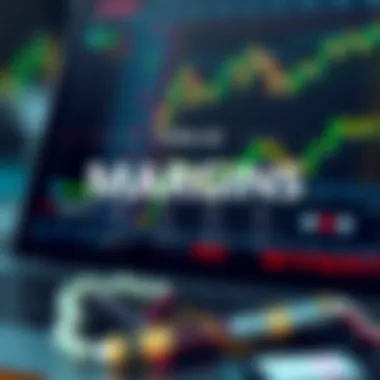
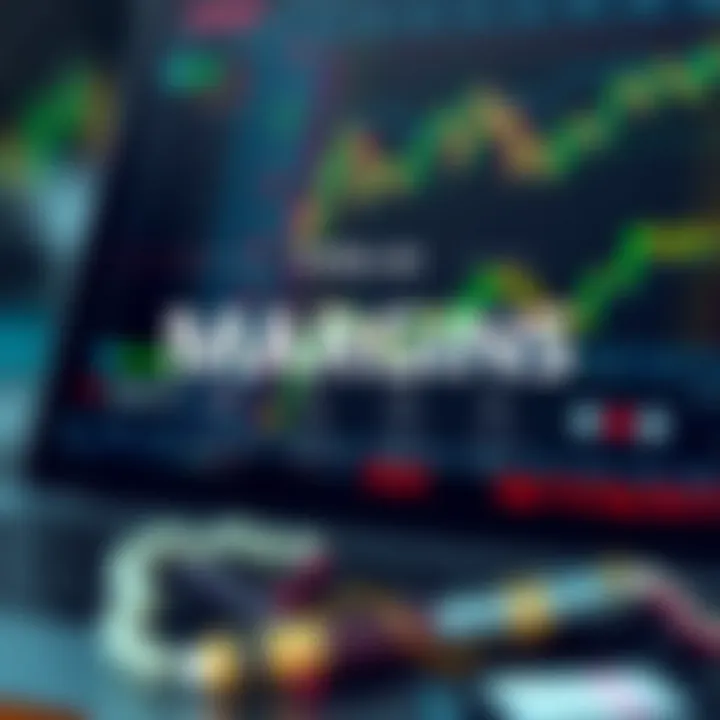
"With great power comes great responsibility"—whoever said it, the saying is particularly applicable here when talking about leverage and margin trading.
Margin and Risk Management Strategies
Effective margin management isn't solely about maximizing potential returns; it's also about mitigating risks. Smart traders use margin strategically. Inadequately managed margins can lead to disastrous results like forced liquidations. Here, we delve into two essential strategies: setting appropriate margin levels and utilizing stop-loss orders.
Setting Appropriate Margin Levels
Setting appropriate margin levels is foundational for effective risk management. A trader must carefully decide how much margin to employ based on their risk appetite and market conditions. High margins may seem attractive, but they also bring increased risk. It’s often a beneficial choice to set a conservative margin level to leave some room for market fluctuations.
A key characteristic of appropriate margin levels is that they align with an individual’s trading strategy. For example, a long-horizon investor might favor a lower margin compared to a day trader who seeks quick profits. This reflects a unique feature of setting margin levels: they can be adapted to suit specific trading styles and market scenarios.
However, the downside is that overly conservative margins might limit potential returns. Finding the balance is crucial. While high margins can enhance profits, they also magnify losses, highlighting the importance of a tailored approach to margin settings in trading.
Utilizing Stop-Loss Orders
Utilizing stop-loss orders is another critical strategy for managing risk when trading on margin. These orders automatically execute a trade at a predetermined price point to help minimize losses. This characteristic makes it a popular choice among traders aiming to protect themselves in volatile markets. While they provide a safety net, it’s also worth noting that stop-loss orders can sometimes trigger during short-term market fluctuations, leading to unwarranted exits from positions.
The unique feature of stop-loss orders is their ability to provide a level of automation in risk management, allowing traders some peace of mind. However, setting the optimal price level for a stop-loss order can be tricky—too tight, and it may get triggered too easily; too loose, and it may expose the trader to greater loss before the position is closed.
In summary, traders must grasp the implications of margins on their trading strategies. Understanding the balance between profit potential and risk, alongside implementing effective management strategies like setting appropriate margin levels and utilizing stop-loss orders, is vital. This careful consideration can go a long way in ensuring sustained success in the fast-paced world of futures trading.
For further insights into margin trading and its complexities, consider exploring Investopedia or Wikipedia.
Market Dynamics and Margin Adjustments
Understanding market dynamics is crucial when discussing futures margin, particularly due to its direct impact on margin adjustments. The relationship between market behavior and margin requirements can significantly influence trading strategies and risk management practices, making this a vital topic for any trader keen on navigating the complexities of futures markets.
Influence of Market Volatility
Market volatility can be likened to a roller coaster ride—full of ups and downs, and thrilling but not without its risks. When markets are experiencing high volatility, the value of assets can change rapidly and unpredictably. Futures margins are directly affected by this dynamic.
When volatility spikes, exchanges may increase margin requirements—often termed a 'margin hike.' This is done to ensure that traders maintain an adequate buffer against potential losses. It’s a safety measure to protect both the traders and the exchange itself. When traders see a margin increase, they might face challenges in meeting these new requirements, which can lead to unexpected liquidations of positions.
Therefore, understanding the current volatility of the markets is essential for any trader engaged in futures. Being prepared allows traders to adjust their positions proactively, ensuring they won’t be caught off guard by sudden shifts in margin requirements. The key takeaway here is simple: stay informed and anticipate!
Regulatory Changes and Margin Policies
As with most financial systems, futures trading is subject to regulations, often spurred by the need for stability and transparency. Regulatory bodies, like the Commodity Futures Trading Commission (CFTC) in the United States, regularly reassess and adjust margin policies to adapt to evolving market conditions.
These adjustments can stem from economic shifts, market stability concerns, or even major geopolitical events. For example, if a market sees a drastic downturn, regulators may decide to tighten margin requirements to mitigate systemic risk.
It's essential for traders to keep an eye on these regulatory changes, as they can directly influence trading strategies and profitability. New regulations might bring about stricter margin requirements or changes in how margns are calculated, which can fundamentally alter one’s trading landscape.
"Understanding and adapting to changes in regulatory policies is not just a suggestion; it's a necessity for sustained success in futures trading," a well-known trading strategist once noted.
For further reading on market volatility and futures trading regulations, consider visiting CFTC.gov or exploring discussions on Reddit's trading forums.
In summary, as market conditions evolve and regulations shift, effectively managing futures margin becomes an ongoing process, vital for traders who intend to succeed in today’s fast-paced trading environment.
Psychology of Margin Trading
The world of margin trading is as much about numbers and calculations as it is about the psychological underpinnings that drive traders’ decisions. Understanding the psychology behind margin trading is pivotal for grasping the broader implications of futures margin. It sheds light on how emotional states and cognitive biases can distort decision-making processes and, in turn, impact trading outcomes. The interplay of these psychological factors can lead to significant financial ramifications, making it essential for traders to confront their mental models and adapt accordingly.
Emotional Factors in Margin Decisions


When traders enter the world of margin trading, they often venture beyond the safety of their comfort zone. This shift exposes them to amplified emotional responses. Consider the fear of losing what has been invested. In the heat of the moment, this apprehension can cloud judgment, causing individuals to make snap decisions that deviate from their original strategies. Conversely, the thrill of potential profits can lead to reckless behavior, persuading traders to take positions that might not align with sound analysis.
Here are some common emotional factors that play into decision-making when trading on margin:
- Fear of Missing Out (FOMO): A potent driver, especially in volatile markets. This can propel traders to jump into trades without adequate analysis.
- Regret Aversion: Traders may hold onto losing positions longer than they should, fearing they will regret letting a trade go too soon.
- Overjoyed Euphoria: A euphoric state derived from a series of successful trades can lead to overconfident decisions that overlook inherent risks.
A balanced approach in recognizing and managing these emotions can provide traders with the clarity needed for better decision-making.
Understanding Overconfidence Bias
Overconfidence bias is a psychological phenomenon where individuals overestimate their knowledge or ability to predict market movements. Within the realm of margin trading, this bias can be particularly perilous. Traders, buoyed by a few successful trades, might begin to believe they possess an infallible ability to forecast the market, leading them to take undue risks.
There are crucial points concerning overconfidence bias:
- Increased Leverage: When traders exhibit overconfidence, they may opt for higher leverage than is prudent, ignoring the potential for significant losses.
- Ignoring Evidence: A trader might dismiss crucial data or contrary viewpoints, becoming entrenched in their beliefs, which can hinder adaptive strategies.
- Risk Underestimation: Overconfident traders often underestimate the risks associated with their positions, believing they can weather any storm. This can lead to catastrophic outcomes if the market moves unfavorably.
In summary, recognizing the psychological factors at play in margin trading is essential for success. Traders must cultivate awareness of their emotional reactions and cognitive biases, adapting their trading strategies to mitigate these influences. Being mindful of one's psychology not only sharpens decision-making but also fortifies trading discipline.
"The objects we pursue cannot bring us happiness without the discipline of a well-balanced psyche."
For a deeper understanding of cognitive biases, consider resources from the American Psychological Association APA and discussions on investing psychology available on Investopedia.
Exploring these intricate layers of psychology will equip traders with the necessary tools to navigate the often turbulent waters of margin trading.
Future Trends in Margin Trading
The landscape of margin trading is evolving rapidly, influenced by changes in technology, market dynamics, and regulatory frameworks. Understanding the future trends in margin trading is essential for traders who wish to stay ahead of the curve and effectively manage their investments. By examining technological advancements and hedging strategies, traders can leverage new tools and approaches that enhance their trading efficacy while mitigating risk.
Technological Advancements Impacting Margin Requirements
As technology continues to march forward, it transforms the very fabric of margin trading. One of the key areas where innovation plays a significant role is in the calculations and adjustments of margin requirements. Artificial intelligence and machine learning algorithms are now capable of analyzing vast amounts of data in real-time, allowing for more responsive margin adjustments that reflect current market conditions.
For example, if the volatility of a particular asset spikes, systems can automatically increase the margin required for that asset to protect against potential losses. This responsiveness helps maintain the integrity of the market while also safeguarding individual traders' investments.
Moreover, the rise of blockchain technology offers transparency in trading, which can lead to a more streamlined process for calculating and enforcing margin requirements. By utilizing smart contracts, transactions are executed automatically when predefined conditions are met, reducing the potential for human error and improving overall efficiency.
"Future innovations will redefine the way traders engage with margins, shifting from traditional outdated models to dynamic, automated frameworks that respond to market fluctuations in real-time."
Hedging Strategies in the Futures Market
Hedging has always been a cornerstone of risk management in trading, and this trend is growing in importance as futures markets become more complex and interconnected. Effective hedging strategies allow traders to minimize exposure to unpredictable price movements, thus securing their profits and limiting losses. In the context of margin trading, these strategies necessitate a careful balance between risk and potential profit.
Future trends in hedging will likely see an increase in the use of synthetic positions. Traders may accumulate instruments that replicate the performance of underlying assets while maintaining lower margin requirements. Additionally, with the rise of derivatives, more sophisticated hedging techniques are becoming accessible, allowing for more tailored risk management solutions.
Traders should also consider the implications of algorithmic trading strategies for hedging. Algorithmic trading can facilitate real-time hedging adjustments by employing pre-defined criteria, ensuring that hedges remain effective as market conditions shift.
Finale and Key Takeaways
In the world of futures trading, understanding margin is not just a detail; it's the bedrock of risk management and profitability. This article has traversed various aspects of futures margin, highlighting its crucial role in facilitating trades while safeguarding market integrity. For traders, both new and seasoned, grasping these concepts can lead to more informed decisions, ultimately paving the way for more successful trading outcomes.
Summary of Key Concepts
- Types of Margin: We explored initial and maintenance margins, which are fundamental for entering and sustaining positions in the futures market. Knowing these ensures traders can meet their obligations without unnecessary stress.
- Margin Calculations: We delved into how margin percentages and leverage factor into your trading strategy. Understanding this can prevent unwarranted losses and enhance potential gains.
- Market Dynamics: Several elements influence margin requirements ranging from volatility to regulatory changes. Traders need to be agile, responding quickly to these alterations in the market landscape.
- Psychology of Margin Trading: Emotional pitfalls, like overconfidence, can derail even the best-laid plans. Acknowledging emotional factors helps in building a comprehensive risk framework.
This summary pinpoints the crux of margin trading basics, presenting a roadmap for traders in navigating the often-complex futures market.
Final Thoughts on Futures Margin
The conversation around futures margin is ever-evolving, shaped by technological advancements and market innovations. As traders, it becomes essential to stay informed and adaptable. The future of margin trading will likely accentuate technology and data-driven decision-making, enhancing liquidity and reducing risks associated with trading.
Moreover, with increasing emphasis on regulatory standards, understanding these implications fosters more ethical trading practices that benefit the entire market ecosystem. The lessons learned from this journey through futures margin do not merely serve a single moment; they equip traders with essential tools for a continuously shifting financial landscape.



